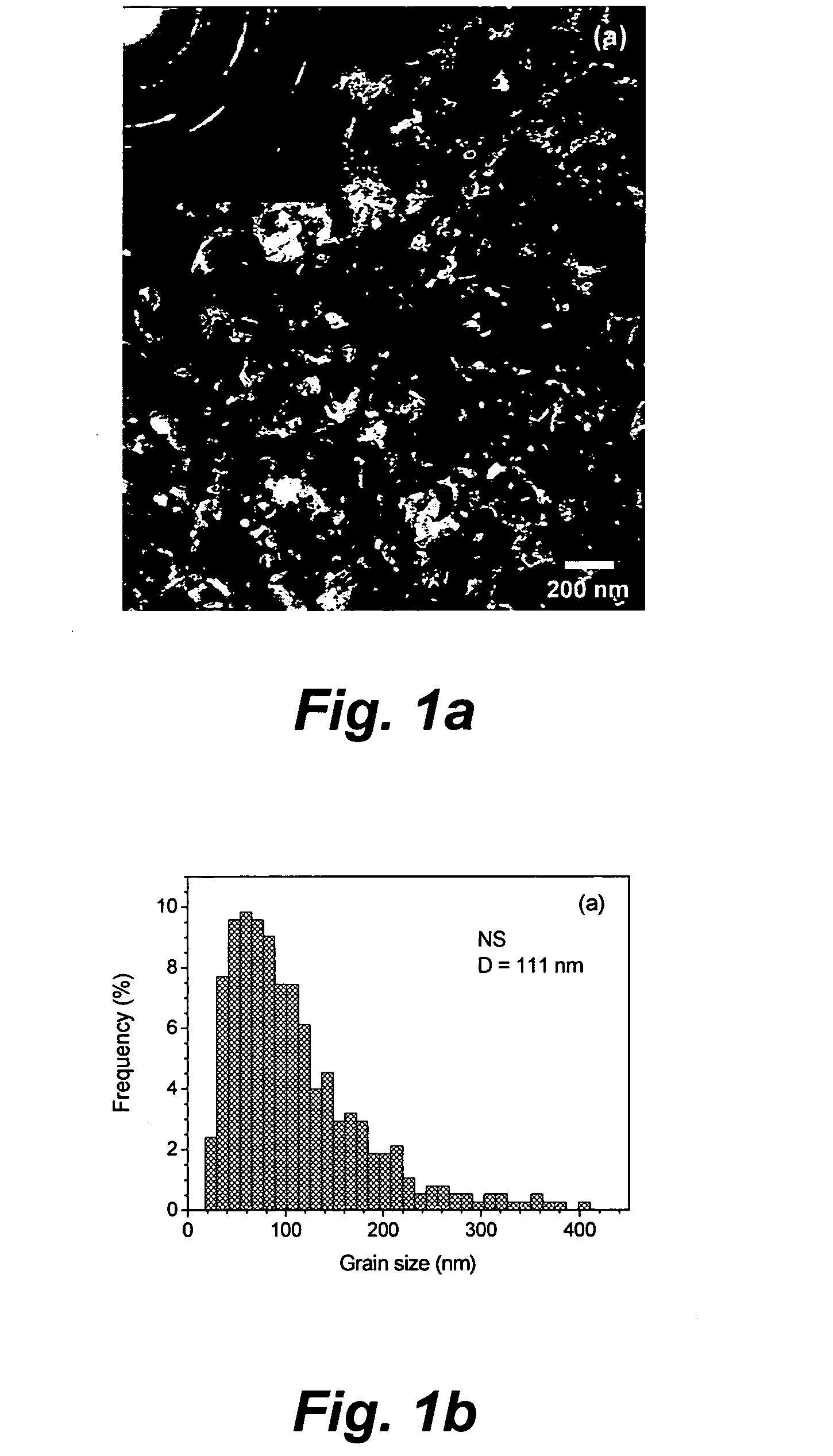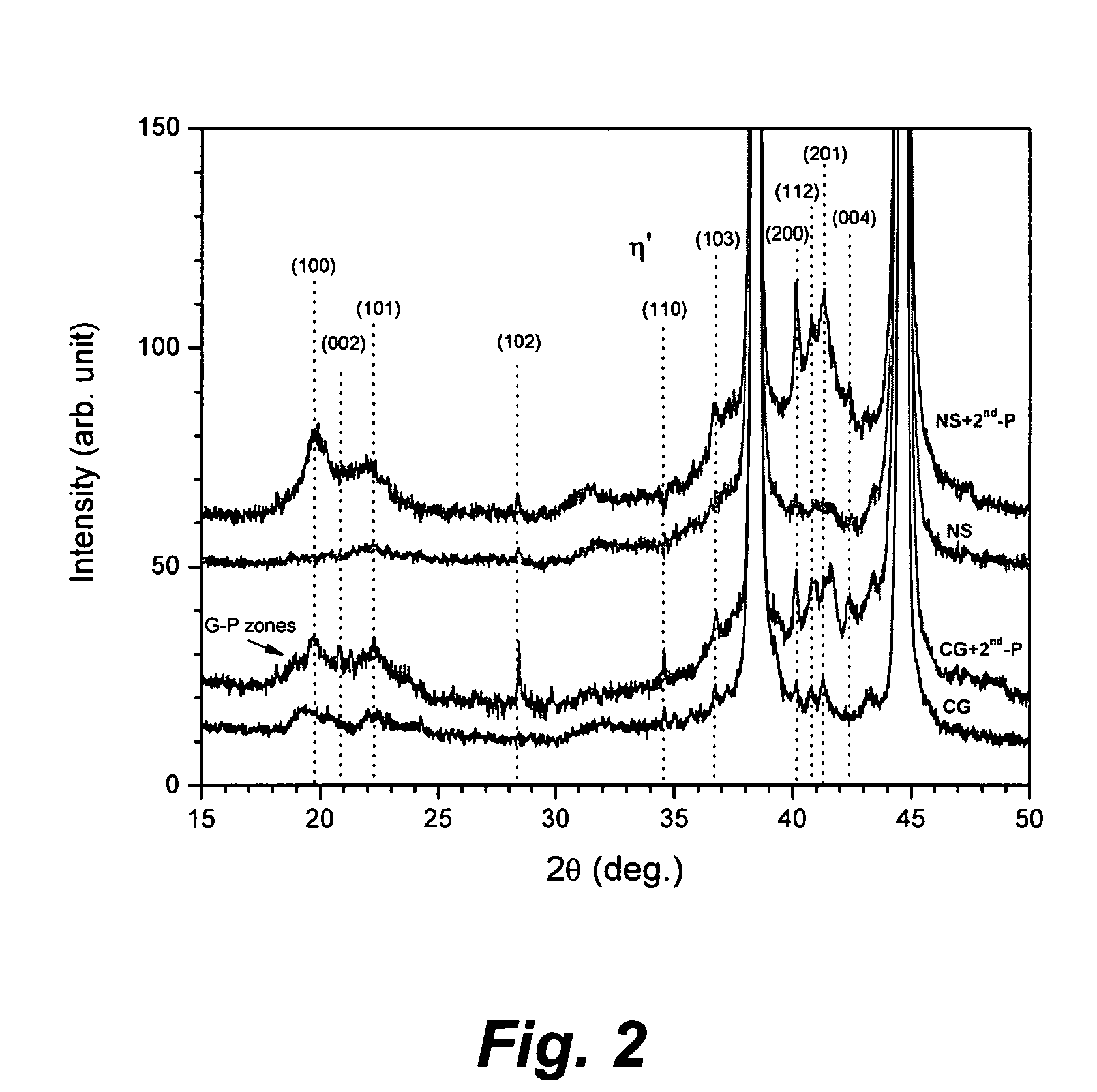Preparation of nanostructured materials having improved ductility
a technology of nanostructured materials and nanostructured materials, which is applied in the field of nanostructured materials, can solve the problems of reducing ductility, increasing strength, and limited applications of these types of nanostructured materials, and achieves the effect of increasing the ductility of workpieces, and not decreasing the strength of workpieces
- Summary
- Abstract
- Description
- Claims
- Application Information
AI Technical Summary
Benefits of technology
Problems solved by technology
Method used
Image
Examples
Embodiment Construction
[0022]The invention is concerned with preparing nanostructured materials having improved ductility. The invention was demonstrated using a 7000 series aluminum alloy known in the art as aluminum 7075. Samples of 7075 aluminum alloy were heat treated to form single-phase coarse-grained aluminum 7075 alloy, which was subsequently rolled at a cryogenic temperature and then subjected to aging at an elevated temperature. The result of the rolling was nanostructured 7075 alloy with much higher strength than the coarse-grained 7075 alloy but with low ductility, and the result of aging was an improvement in both the strength and ductility of the nanostructured alloy. Transmission electron micrograph (TEM) images and x-ray diffraction spectra demonstrate that the aging resulted in the formation of second phase particles in a nanostructured matrix. While not wishing to be bound by the present explanation, the formation of the second phase particles is believed to contribute to the observed en...
PUM
| Property | Measurement | Unit |
|---|---|---|
| Grain size | aaaaa | aaaaa |
| Grain size | aaaaa | aaaaa |
| Grain size | aaaaa | aaaaa |
Abstract
Description
Claims
Application Information
 Login to View More
Login to View More - R&D
- Intellectual Property
- Life Sciences
- Materials
- Tech Scout
- Unparalleled Data Quality
- Higher Quality Content
- 60% Fewer Hallucinations
Browse by: Latest US Patents, China's latest patents, Technical Efficacy Thesaurus, Application Domain, Technology Topic, Popular Technical Reports.
© 2025 PatSnap. All rights reserved.Legal|Privacy policy|Modern Slavery Act Transparency Statement|Sitemap|About US| Contact US: help@patsnap.com



